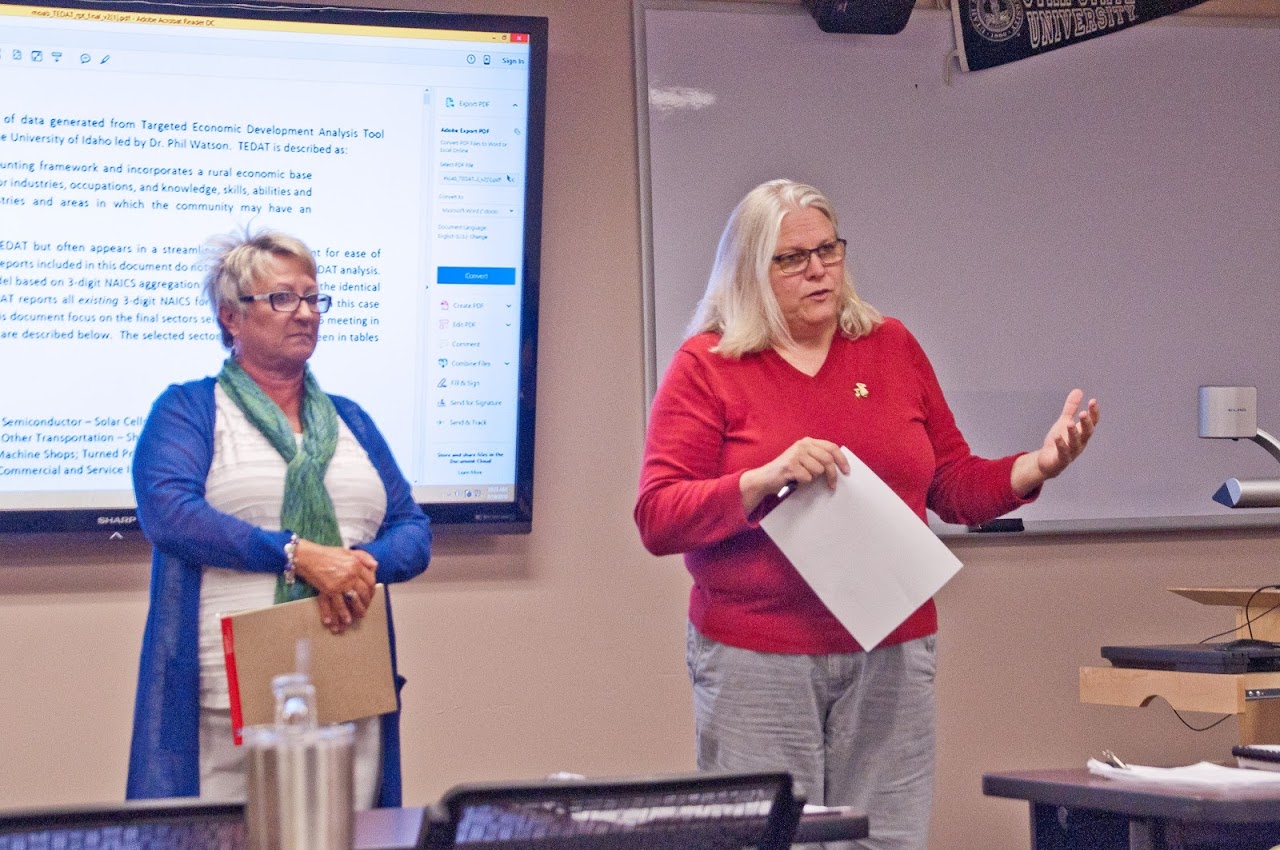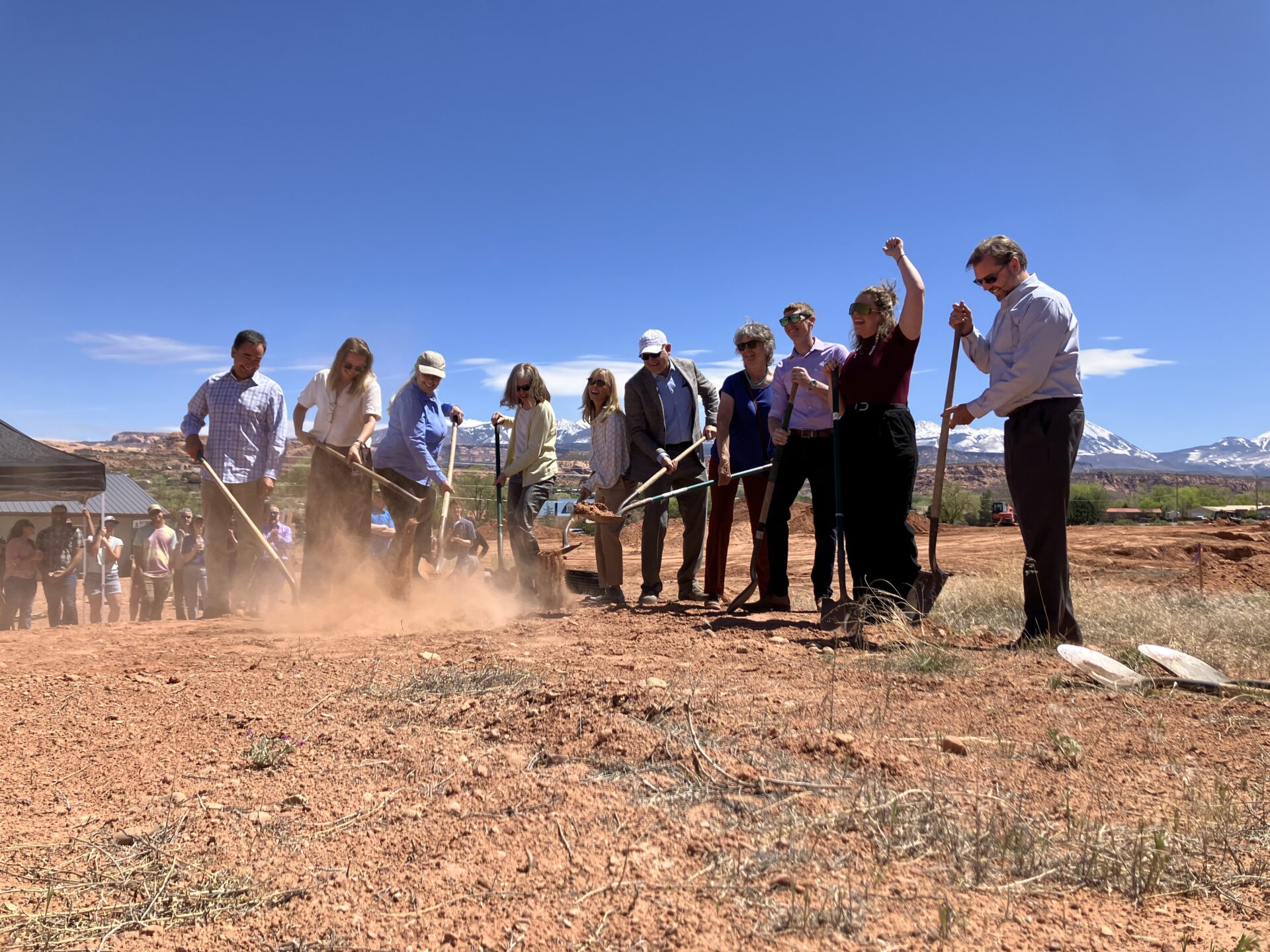The blueprint of Moab’s future economy moved from the drawing board to the design process this month, as government, business and community leaders reviewed the outcome of work they began last December to take concrete steps toward sustainable economic development.
The July 21 meeting marked the completion of the Area Sector Analysis Program (ASAP), an economic development program that has already been implemented in dozens of rural communities throughout the Western U.S.
After eight months of information collection, discussion and analysis, community members who participated in the process selected 13 economic sectors, from solar cell manufacturing to vegetable and melon farming, as most representative of the overall community’s interests and assets.
“The ASAP program gives us a place to start and focus our efforts to bring more business to the Moab community for a balanced economic and financial future,” Moab City Manager and ASAP chair Rebecca Davidson said.
Other sectors that the steering committee identified range from machinery manufacturing, natural food manufacturing, e-commerce and digital media, to scientific research and development, specialized design services and professional scientific and technical services.
The committee is now looking to assemble a team to help ensure that the region has enough people, education, training, housing and other resources that when an existing business or a new business wants to locate in the region and employ people here, the community is ready to offer what they need.
The implementation team’s first tasks include the development of a brochure for potential business owners, highlighting assets that attract people to the community.
“Those assets include our beautiful setting and the education, information or talents of the workforce,” Davidson said.
The brochure will also highlight available land and buildings, utilities and transportation, as well as Moab’s proximity to the airport, the Interstate 70 corridor and other transportation systems, she said.
Former Canyonlands Natural History Association Director Eleanor Inskip, an economist with decades of experience on Moab’s nonprofit boards and in the business community, voiced concerns that the structure of the process did not account for the contributions of Moab’s many nonprofits, or allow their inclusion in the process moving forward.
But Utah State University-Moab business faculty member and ASAP steering committee participant Dr. Cynthia Gibson said the ASAP process itself is meant only to identify economic opportunities. The results should not be seen as negating the importance of other aspects of the dynamic community in Moab, she said.
“It’s the very nature of economic development to bring in more revenue or more jobs,” Gibson said. “The criteria for identifying a viable industry is how well it will do one of those two things. We asked, ‘Will this business or industry actually grow the economy and provide for jobs and economic security for this community?’”
Moab Small Business Development Center Director Beth McCue, who managed the grant that funded the ASAP process, said that the community couldn’t make it without the nonprofits or small businesses that employ local residents.
The intent of identifying new industries is not to replace – but to augment – the tourism industry with year-round, higher-paying positions in industries that take advantage of strengths in the region beyond access to world-class recreation, she said.
The highly technical nature of the process was highlighted in the meeting as it concluded with many attendees still unclear as to the meaning of the data compiled in the final ASAP document. The 42-page document presents the community’s current economic situation in four sets of tables, including rates of employment and economic output created by current top-producing sectors, as well as the 13 sectors identified for future development.
“I want to see them present this to the community in terms people can understand,” Inskip said, elaborating on her concerns about the entire process, which were echoed by others who requested clarification of the information presented by the data.
University of Nevada, Reno, Research Analyst Malieka Landis created the document from the information that the ASAP steering committee assembled, and meeting facilitators asked her to clarify the findings in a follow-up email.
As the meeting concluded, the steering committee was reminded that economic development is not a one- or two-year process. The implementation phase should be embarked upon with the understanding that while short-term goals will be made and accomplished, some of the work done today will require years to come to fruition, Davidson said.
Outside Capitol Reef National Park, the small Wayne County community of Torrey recently concluded its participation in the ASAP process.
Western Rural Development Center Executive Director Dr. Don Albrecht, who facilitated the ASAP process in Moab, is from Wayne County and said the region’s experience with the process could be instructive. The committee chair there left her position due to funding cuts before she could begin to implement that process, Albrecht said.
Benjamin Stutman, a longtime rancher and owner of Torrey’s popular farm-to-table restaurant Café Diablo, was approached often by members of the Wayne County ASAP committee and was disappointed by the outcome of the process there, he said.
“I would love to tell you the opposite, but that’s not the case,” he said. “I think the basic idea and concept is fantastic. You have to have a plan and a set of goals. But you also have to have a large group of committed people to make that happen.”
Albrecht said the experience there highlights the importance of the implementation phase.
“You’ve got to have a leader,” he said. “I’ve been extremely impressed with the steering committee in Moab. Multiple people from multiple parts of the community are committed.”
The committee will share developments as the implementation phase progresses, McCue said. She and Davidson will be meeting with business and nonprofit leaders throughout the community on a regular basis in the following weeks and months. Ultimately, an Economic Development Plan will be released for community review and response.
“I’m excited to see where this progresses,” McCue said. “It’s going to take a lot of work, and it’s not going to happen overnight. But it’s going to be a good thing for this community.”
ASAP process identifies 13 sectors for growth
I’m excited to see where this progresses … It’s going to take a lot of work, and it’s not going to happen overnight. But it’s going to be a good thing for this community.




